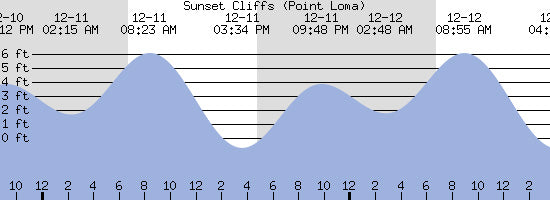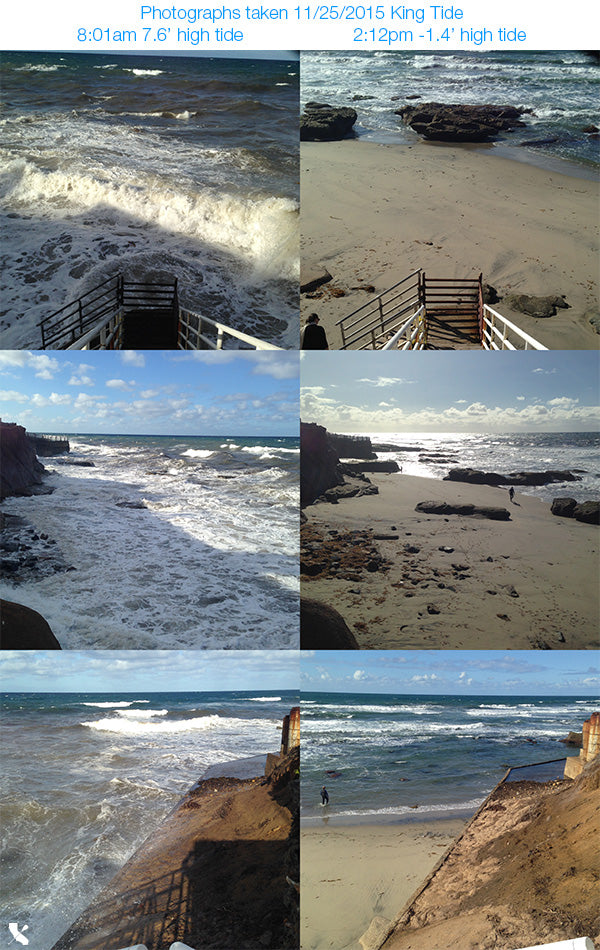If you paddle, you have most likely witnessed the effects of tides. One day, walking to the water is a few feet of sand. Next time you paddle, the walk is several dozen feet long as sand is exposed that was previously underwater, and you are wondering why your craft is so heavy by the time you get to the water. And you have most likely felt their effects too, as if you are flying effortlessly, or paddling uphill through molasses.

Surfers gauge the tides to plan their sessions, and tide pool explorers time their adventures to see the most sea life. So why wouldn't paddlers also take notice of the tides and pick our courses accordingly? Truth is we should. Whether you are steering a 6 man outrigger canoe, or paddling your sup along jetties during a race, your speed can be directly affected by the tide. So, knowing what is happening, why and when, will make you a better paddler.
Below are several common tide questions and super helpful tips to make sure you are well prepared, and picking the best course during your next paddle. Remember, geeking out on paddle topics goes well beyond technique and equipment. It includes the water we paddle too. So with no further adieu, and in non-scientific* laymen paddler terms...
What makes tides?
Basically the moon's gravity acts like a giant vacuum on a portion of our earth, causing the waters to flow from one side of the ocean to the other. Ok so maybe that is way over-simplified, but helps to illustrate what is happening. The moon's gravity is in fact influencing our waters, since they are well...fluid, and creating a bulge.
How often do we have high and low tides?
Roughly two highs and two lows occur each day. (A big-high and a small-high. A big-low and a small-low). I say roughly because the Lunar day is 24 hours and 50 minutes long [cite] versus our solar day of 24 hours. But it is easiest to think of us as having two tidal bulges in a calendar day. High tides will be spaced ~roughly 12 hours and 25 minutes apart. Same with the low tide peaks.
What does that mean for paddlers? Basically if a high tide was 10:00am on Monday, Tuesday the corresponding high will be 10:25am, Wednesday 10:50am and so forth. So if you can just remember what the time for it was a few days prior, you can do a little math in your head to estimate on the current day.

Throw in the 'other' high and the two lows alternating and you have your four tides for the day, [Paddler Tide Tip]: each ~roughly 6 hours and 12 minutes apart. So if 10:00am was high, then low will be 4:12pm. You can plan ahead. Steersmen and women...you should know before a race if the tide might switch during your race! It might make a difference for your crew for those long courses that start and finish in a harbor as the escalator of water could be going the other way when you return (see below about "where is the current fastest"). That said, there might be a trade-off, like adding on distance to your course to tap into a current, which might be counter-productive. Oh, the joys of tactics!

What is a king tide?
Tides are highest during a new and full moon. However the moon's distance from Earth varies, which is why the levels of the highs and lows vary. (i.e. A full moon in November may cause a higher tides than it does in September). It is these most extreme tides that we call King tides, also called "spring tides". These are really extreme high tides and low tides caused by the moons gravitational pull being stronger. (It is then that we see our beach stored canoes and water craft precariously close to the waters edge.)

For paddlers though, it goes way beyond beaches being covered and revealed. It also means huge tide differentials between a hi and low. Which equals a bunch of water flowing like a river. For example, if we have a -1.0' low tide followed by a 8.0' high tide, that is a 9' differential. So let's break that down...
- Over the course of 6+ hours the sea level is going to rise 9 feet.
- That is ~1.5'/hour.
- That is ~1" every 3 minutes! Of the ocean! Imagine the current that must cause.
So where is the current the fastest?
A narrow channel will act like a funnel so you can expect the tidal flow to be very strong anytime you are paddling in entrances to bays and harbors, and long narrowing stretches where water will be forced into small areas (flood control channels, river mouths) where water pours in and piles up like a dead-end street. [Paddler Tide Tip]: Keep this in mind when you are launching as getting home safely can be a challenge if you must return against the current.
So now that we know areas where the tide often can play a significant role, lets zoom in further. Choosing your path within the channel or any body of water where there is a tidal current. [Paddler Tide Tip]: Water flows fastest in deep parts, slower in shallow parts (path with more resistance). So depending on if you are going with or against the flow, pick your path thoughtfully. Generally the middle of a channel will be deepest, and therefore fastest flow of water. That said, know your local waters and explore them at low tide to see the different sand bars and depths.

When is the tidal current fastest?
[Paddler Tide Tip]: About two hours before the peak tide is when the current moves quickest. When the peaks 'switch' the tidal flow is slowest. This is called the slack tide, and your path choice should be more focused on the most direct course, the best wind or surf conditions, or the prettiest scenery, since the tide is a non- factor.
How do I track the tides?

Websites (Tides.net, Surfline.com), Books (Tide Log, freebies at local surf shops), and various Apps (TideApp, Surfline, TideGraph) can all help you know before you go. However, if you don't have a chance to find out beforehand, here are a few more [Paddler Tide Tips] that can help you out on the water and beach!
- Look to see if rocks, sand and structures are wet. If so the tide is likely going from high to low, an ebbing tide. If nothing is wet, the tide is most likely 'coming in', a flood tide. Also on the beach, look for wet sand and what I like to call the kelp line (kelp, debris and small items) that will often mark if there was a recent high tide and where it went to. [Also a good tip when you setup at the beach to stage your gear.]
- Look for anchored buoys floating in the water. They often catch sea weed and kelp. The kelp will flow in the direction of the current, much like a wind sock. Wind current can also be a factor though, so factor that in.
- Not the best method but something to have in your hip pocket and use in combination with the others...locate a bird or something sitting on the water, or sit on your craft and see if there is any drift using stationary land marks as a guide. This observation is the weakest, as drift can be influenced by other factors such as wind. Not to mention, waters can move in all sorts of directions in bays and harbors and create weird whirlpool currents.
Where is the biggest tide swing in California?
I don't have an exact answer for that, but my research found Coyote Creek, South Bay San Francisco Bay to have a tide swing during the November 2015 King Tides of 10.22' High to a -1.49' Low. Wow, that's a whole lotta water!

I hope you all enjoyed this. And next time you are out in the water, you can apply some of these tips to your paddle. Even if it means you are suddenly screaming by me in a race due to picking the better line. :)
*[Disclaimer: I am not a scientist, just a paddler who has always geeked out over tides and how they can affect my paddle performance. If any data or narrative in here is wrong, please share with me so, together, we can provide the most accurate tips for our fellow paddlers.]
Artistic Credit: Thank you to Megs Phillips for the comic art. Once again you capture what paddling can feel like!
Team Writer Clarke Graves - If there is water, he will paddle it (regardless of craft). Clarke is a surfer turned paddler who grew up in San Diego but has traveled every corner of California enjoying its beauty and appeal. He has had the privilege of racing SUP, OC6, OC2, OC1, Prone and can't wait to hop into a dragon boat and surf-ski for an extended length of time.
One of Clarke's goals is to paddle as much shoreline in California as he can, with as many paddling friends who are willing to join him. If you have an idea for Clarke to write about or any questions, send it our way and we will pass it along!

















Clarke - April 21, 2022
Hi Jo Wright, great question.
So in our experience we agree the up and down can really create a roller coaster effect, and not always a fun one when balance is precarious on a tippy sup. In those situations, I tend to find that angling the board diagonally to the swells can help minimize the stop and go effect and allow the board to plane at the troughs instead of pearling the nose into the oncoming swell. Doesn’t have to be a huge angle to help, as too much and you lose your direction and tanget…but the more angle does soften things a bit. I hope this helps, let me know in comments if you want to discuss more!
Clarke, Cali Paddler
Jo Wright - April 21, 2022
Great article. In a follow up article please could you explain how to cope with paddling, when a tide is coming into a bay? The swell is large and each swell takes the board forward fast then each dip (between swells) stops the board in its tracks , before the next swell picks it up and shoots it forwards again. The back and forth created means it is hard to stand up and how and when should you paddle on these swells and dips please?
Jo Wright - April 21, 2022
Great article. In a follow up article please could you explain how to cope with paddling, when a tide is coming into a bay? The swell is large and each swell takes the board forward fast then each dip (between swells) stops the board in its tracks , before the next swell picks it up and shoots it forwards again. The back and forth created means it is hard to stand up and how and when should you paddle on these swells and dips please?
Jo Wright - April 21, 2022
Please could you explain how to cope with paddling, when a tide is coming into a bay? The swell is large and each swell takes the board forward fast then each dip (between swells) stops the board in its tracks , before the next swell picks it up and shoots it forwards again. The back and forth created means it is hard to stand up and how and when should you paddle on these swells and dips please?
Deborah Dennis - March 03, 2017
Great article Clark! Way to keep everyone informed and safe on the water!
Deb
Tam Outrigger
Priscilla McKenney - February 10, 2017
Hi Clark- Really informative and relevant to every paddler- all levels of experience. Good framework and then there’s what is the water doing in this moment? Check out a short blog relevant to reading water on San Francisco Bay. Mahalo for your postings! check out my blog: http://www.itsaboutthriving.com/back-in-the-boat/
Chris - December 19, 2015
Nice article!
Kelly - December 05, 2015
Very informative. And easy to understand. I can use this to teach others.
Tyler Irwin - December 03, 2015
Great article Clarke! This information is also really helpful to know when you’re traveling to new areas to paddle. For example, up in my neck of the woods (Pacific Northwest) we had a tidal swing today of close to 7’.
Just make sure you know what’s happening with the water no matter where you’re at!